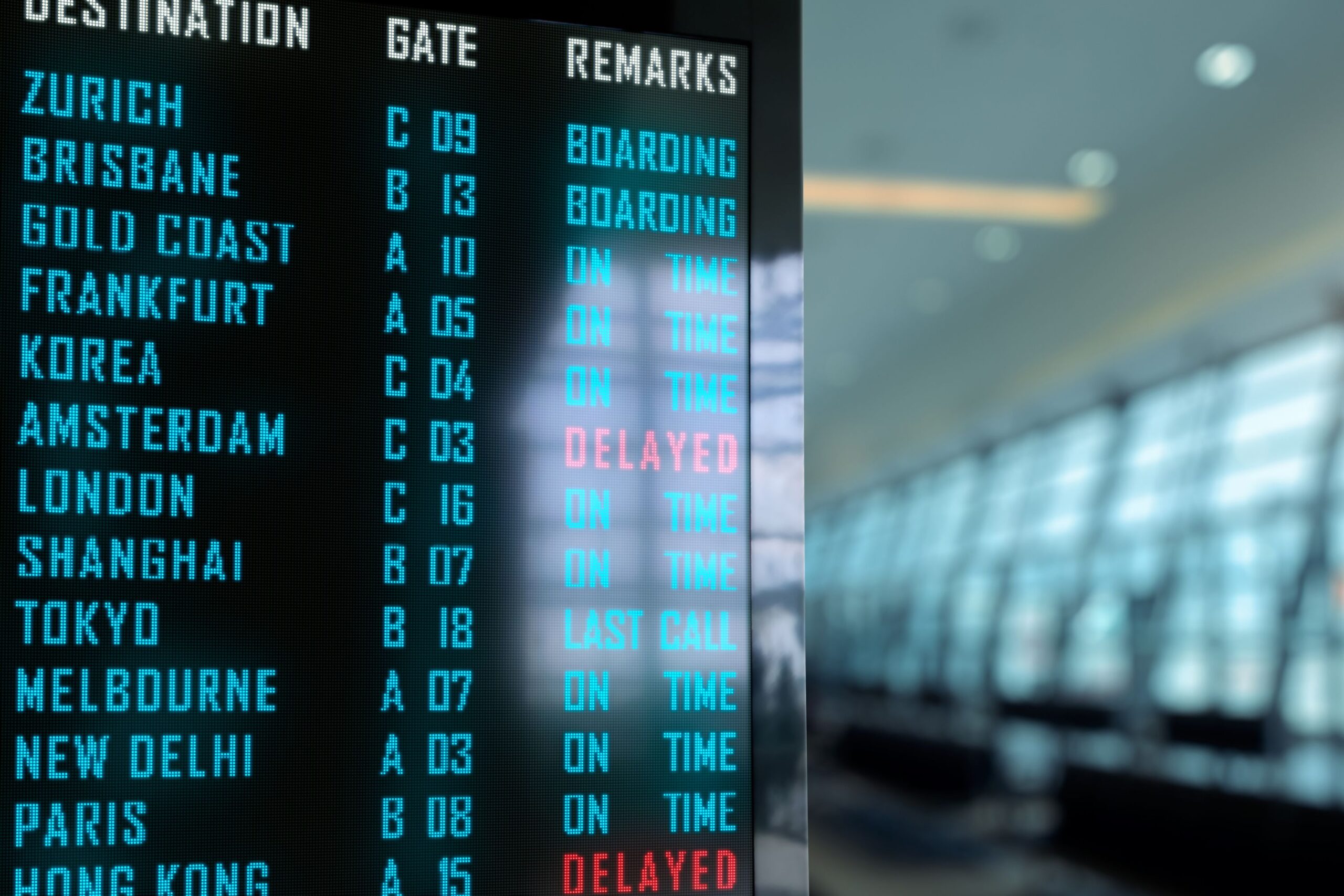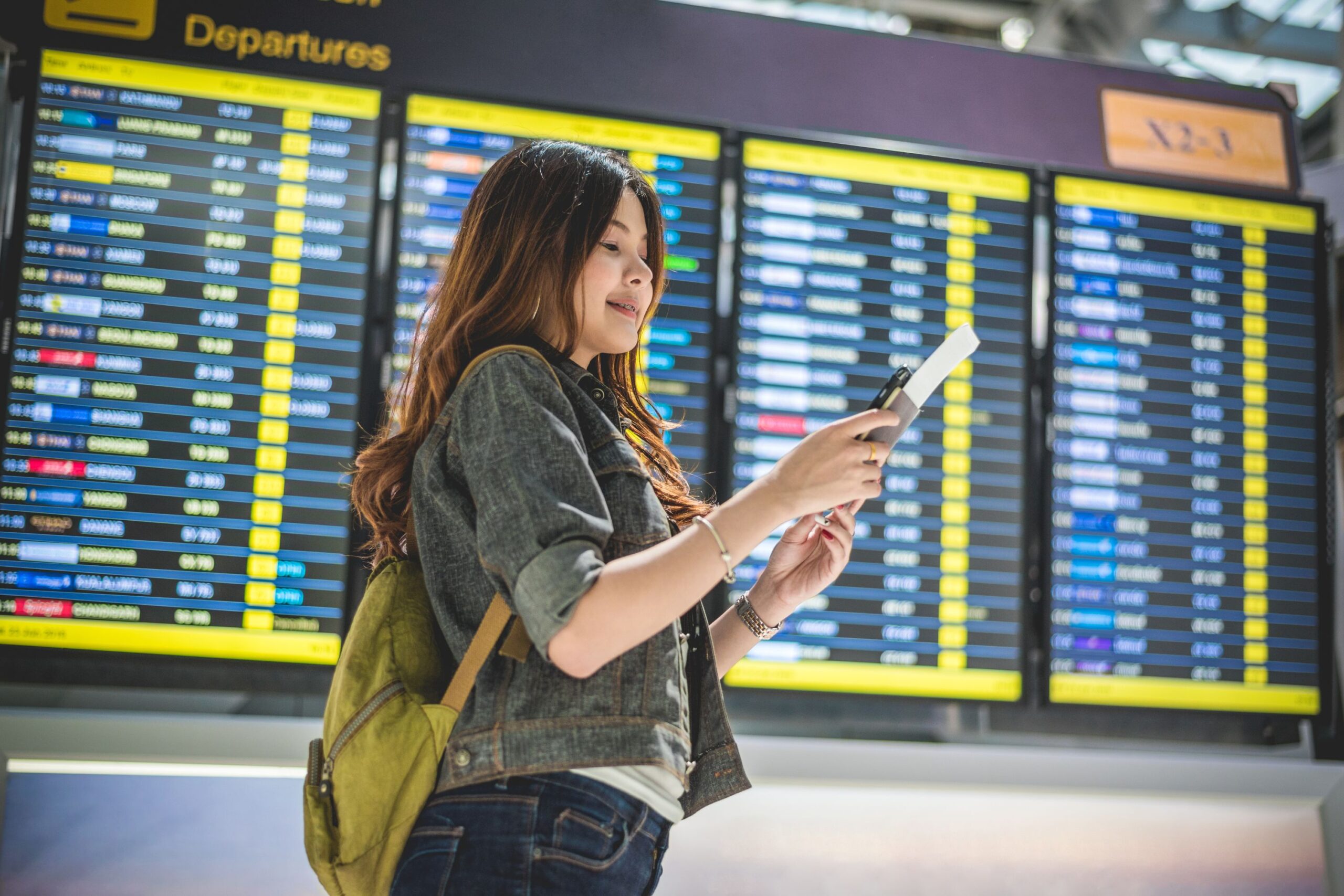You’re packed, heading out the door, and your phone lights up—your flight’s been delayed by two hours. You didn’t check a screen. You didn’t call the airline. You just knew. That’s the power of knowing exactly what a flight status alert is and why it matters.
A flight status alert is a real-time notification that tells you when something changes with your flight. This can mean a delay, a cancellation, a gate change, or even an earlier-than-expected departure. It’s different between missing your boarding call and strolling to the gate at the right time.
Why These Alerts Matter More Than Ever
Air travel doesn’t always go according to plan. Weather, air traffic, and operational issues cause constant shifts. This is precisely where flight alerts become essential. Instead of relying on airport monitors or tracking updates, you’ll have the information delivered to your phone or inbox.
Using a flight status alert, travelers are instantly notified of changes to their flight’s timing or location. That early heads-up gives you a chance to adjust. You might decide to relax longer before heading to the gate, or grab food without worrying you’ll miss an announcement.
These alerts help cut through the confusion at crowded airports. They’re practical, quick, and tailored to your trip. Once you’ve tried them, it’s hard to imagine flying without one.
How Flight Status Alerts Work
The system behind these alerts is seamless. Airlines and flight tracking platforms monitor flight progress from scheduling to touchdown. You’re notified automatically when something shifts, like a plane being delayed in another city.
You’ll usually sign up for alerts when you book your flight. Some airlines let you opt in right on the checkout page. Others send you a confirmation email with a link to set it up. And if you’re using a travel app, it might pull your itinerary and activate updates. Either way, the process is simple and takes seconds.
Once enrolled, the system tracks your flight number and monitors any changes. So, if your departure gate moves across the terminal, your alert will tell you before the overhead speaker kicks in.
Where to Sign Up for Flight Status Notifications
The most reliable place to activate alerts is directly through your airline. Nearly every primary carrier offers this service. All you need is your confirmation number or frequent flyer account, and the airline will send flight status updates via text or email.
Third-party travel apps are another popular choice. Apps like TripIt, FlightAware, or even Google’s travel tools can sync with your reservations and monitor your flight status in real time. These platforms are handy for frequent travelers—they pull all your upcoming flights into one place and keep you posted at every step.
If you use an online travel agency like Expedia or Kayak, you’ll often find flight status alert options in your trip summary. These sites may forward alerts from the airline or generate their own.
What matters most is that you choose a method that suits your habits. You only need one reliable source that sends real-time alerts, and you’re covered.
Types of Alerts You Might Receive
When people ask what is a flight status alert, they’re often thinking about delays. But the range of notifications is broader than that. Depending on how your flight evolves, you’ll likely receive several updates.
Delay alerts are the most common. Even a 15-minute shift is something you’ll want to know about. These alerts can include projected departure times and alternate arrangements for longer delays.
Cancellations are more disruptive, but an early alert gives you a head start on rebooking. That’s crucial when hundreds of people are affected at once and the next available seat fills fast.
Gate change notifications are lifesavers in large or unfamiliar airports. No one wants to rush across terminals at the last minute.
The service also includes departure and arrival updates, which are especially useful when coordinating pickups or trying to catch a connecting flight.
These alerts give you back control of your schedule—even when the airline changes it.
How These Alerts Reduce Airport Stress
Airports can be chaotic. Crowds, unclear announcements, and last-minute changes create stress fast. But when you receive flight updates directly, you’re no longer at the mercy of loudspeakers or information boards.
Say your flight is suddenly delayed by three hours. Instead of sitting in front of the gate the entire time, you might visit a lounge, walk around, or find better seating. That flexibility transforms your experience. A gate change? You’ll already be walking in the right direction while others await announcements.
Using a flight status alert helps you travel smarter. One small step makes your airport experience smoother and more relaxed. You don’t need to guess. You’ll know.
How to Set Up a Flight Status Alert
If you want to stay updated without constantly checking your boarding pass or the nearest monitor, activating a flight status alert is one of the easiest things you can do. You won’t need to install anything complicated or learn a new system. It usually takes a few taps or clicks, and you’re ready.
The first place to check is always your airline. After booking your flight, visit the airline’s website or open their mobile app. Many airlines include an alert option right on the flight summary page. You’ll usually be asked to enter your email or mobile number, and that’s it. You’ll start receiving updates instantly—delays, cancellations, gate changes—whatever might affect your trip.
If traveling internationally or juggling several layovers, using a third-party app might help you organize everything in one place. FlightAware, TripIt, and App in the Air are three trusted tools that sync with your itinerary and monitor every leg of your journey. These apps send push notifications that arrive even faster than official airline messages. You can also customize how you get alerted—via SMS, email, or app pop-up.
Choosing the Right Tool for Your Travel Style
Different travelers prefer different tools. If you regularly fly with the same airline, sticking with their alert system might make sense. You’re getting information straight from the source, and many carriers prioritize members of their loyalty program.
On the other hand, if your itinerary is booked through a third-party site or includes multiple airlines, a consolidated app like TripIt will make life easier. You’ll get a unified trip timeline, with every flight, hotel, and car rental listed clearly. Your flight status alert will cover each segment—even codeshare flights that aren’t always easy to track.
Google Flights also offers alert features, especially if you’re watching flight prices or browsing schedules. Once you select a flight, you might get reminders to book or update if a better option appears. While these aren’t always branded as “flight status alerts,” they provide helpful real-time insight.
Why Flight Status Alerts Matter Even More During Layovers
Connecting flights often leave little room for error. If your first flight is delayed, your entire plan can fall apart. That’s when a well-timed alert becomes critical.
Let’s say your inbound flight to Frankfurt is running behind schedule. Without a status update, you might not know that your airline has already rebooked your connection. With a flight status alert, you’ll get that information early, sometimes before the airline staff announces anything at the gate.
If you’re stuck between terminals or need to rush, an alert can give you a head start. Or, if the airline provides a longer layover due to changes, you’ll have more time to relax or grab food. Knowing where your flight stands means you’re always in control, even when your itinerary gets complicated.
How Flight Alerts Help Friends and Family, Too
This isn’t just about the person flying. If someone is coming to pick you up from the airport, they’ll also benefit from these updates. Some apps and airlines allow you to share your flight status with friends or family. That way, they’ll know if your arrival time shifts—and they won’t be stuck circling the airport or waiting in the wrong terminal.
Parents of solo travelers, business partners waiting at the arrivals hall, or even hotel drivers often rely on these updates to plan their timing. A shared flight status alert keeps everyone in the loop, so there are no last-minute surprises.
Can You Rely on These Alerts 100%?
They’re accurate most of the time, but not flawless. A flight status alert is only as up-to-date as the airline’s data. Rarely, there may be a lag between a real-world change and the system update.
That’s why it’s always smart to use alerts as your first line of information, not your only one. Combine them with the airline app and quickly check the airport screens if unsure. Most of the time, though, alerts arrive ahead of announcements. And they beat waiting long lines to ask a question at the counter.
Using Flight Status Alerts for International Travel
When you’re flying internationally, everything becomes more complex. Airports are larger, security lines take longer, and time zones shift. A flight status alert gives you that extra layer of reassurance. It won’t just tell you when something changes—it helps you stay grounded when your surroundings are unfamiliar.
For example, if you’re connecting through an international hub like Heathrow, Dubai, or Singapore, the last thing you want is to miss a gate change or departure update. An alert will ping your phone, giving you enough time to find your way through terminals you’ve never seen before.
And if your first flight is delayed and you’re worried about the next one? Some airline apps automatically show rebooking options or direct you to customer support. A third-party flight tracker might give you real-time live runway info or aircraft movement. That detail matters when you’re jet-lagged and don’t speak the local language.
Stay Subscribed Even After You Board
Most travelers turn off notifications once they reach the gate or take their seat. But some of the most critical flight alerts come after you’ve boarded. Airlines continue to send updates throughout your journey—and they don’t stop when the wheels lift off.
Why does this matter? Because arrival times often change mid-flight. Weather patterns, rerouting, or air traffic congestion might mean you land later or earlier than expected. Staying subscribed to a flight status alert means your arrival info will be current when you touch down. That’s especially helpful for people waiting to pick you up or if you’ve got transportation or hotel arrangements that depend on exact timing.
Some apps even track your plane in the air. You’ll often be the first to know if there’s turbulence, holding patterns, or last-minute airport changes.
Handling Delays and Cancellations With Less Stress
Delays happen. Cancellations happen. But they don’t have to ruin your trip. If you’re signed up for a flight status alert, you’ll be one of the first passengers to know what’s happening, which gives you a serious advantage.
When flights get disrupted, every minute counts. The airline might offer rebooking options through the app, but those seats go fast. If you’re alerted before the gate staff has made the announcement, you can jump on the app and claim a new seat before anyone else queues.
It’s also easier to reach customer service when you’re ahead of the crowd. Most travelers only realize there’s a problem when the boarding time quietly disappears from the screen. But with a status alert, you won’t miss that moment.
If you’re experiencing an overnight delay, early alerts can help you secure hotel vouchers, meal credits, or compensation before the rush begins.
What Happens If Alerts Conflict With Airport Screens?
Once in a while, you’ll see a gate or time on the airport monitor that is different from your alert. It happens. That’s when most travelers panic—but you don’t have to. Usually, the app or alert draws from airline data directly, while airport displays are updated manually or with a slight delay.
If this happens, open the airline’s official app or visit the airline counter to verify the information. Most of the time, your alert will prove to be accurate. But if there’s a conflict, confirming through a human agent is always your best fallback.
Staying alert (pun intended) helps you navigate the airport confidently, even when things seem inconsistent.
Do Flight Status Alerts Cost Anything?
Here’s the good news: most flight alerts are free. Airlines, booking sites, and apps offer this service as part of the travel experience. You don’t need to pay extra to get updates on your booking.
Some third-party tools have premium features, like in-flight tracking or lounge access notifications, but the core alert services are usually included at no cost. You won’t need to subscribe or share payment details. Just activate alerts during the booking process or through your confirmation email, and you’ll start receiving them automatically.
If you’re using a paid flight tracker, ensure the extra features are worth it. The free alert options from airlines and apps are more than enough for most travelers.
Why You Should Always Use a Flight Status Alert
Even if your trip seems simple—one short flight, no connections—it’s still worth turning alerts on. Delays don’t just affect long-haul or international flights. Weather, airspace issues, or crew availability can disrupt regional routes and domestic travel just as easily.
Getting a flight status alert is one of the easiest ways to feel prepared and in control. Setting up doesn’t take more than a minute and could save you hours of frustration. You’ll know what’s happening before it reaches the loudspeaker, and that head start means you can adapt quickly, without stress.
Try them on your next flight if you haven’t used them before. It’s one of those small travel habits that makes a big difference. Once you’ve experienced the convenience, you’ll never want to fly without it.
FAQs
What is included in a flight status alert?
A flight status alert includes real-time updates about your flight, such as delays, cancellations, departure time changes, and gate updates.
Can I get flight alerts if I book through a third-party website?
Yes. Most major booking platforms, like Expedia or Kayak, include options for flight notifications after you complete your booking.
Are flight status alerts always accurate?
Yes, mostly. They rely on real-time airline data, which is usually accurate. However, slight delays in updates can occur in rare cases.
How soon do I receive alerts before something changes?
Within minutes. Once a change is registered in the airline system, you’ll typically be notified right away, sometimes before airport monitors are updated.
Is there a charge for flight alerts?
Usually no. Most airlines and apps provide basic alert services for free. Some advanced tracking tools might offer paid upgrades, but aren’t required.
Can I share flight status alerts with family or friends?
Yes. Many airline and travel apps allow you to share your flight updates with others via text or email, which is helpful for pickups or meeting points.
Do flight alerts work for international flights?
Absolutely. Flight status alerts are beneficial when dealing with large airports, unfamiliar terminals, or multiple connections.
Should I turn off alerts after boarding?
No. Keeping alerts on can help you receive updated arrival information, gate changes at your destination, or delays while in the air.




